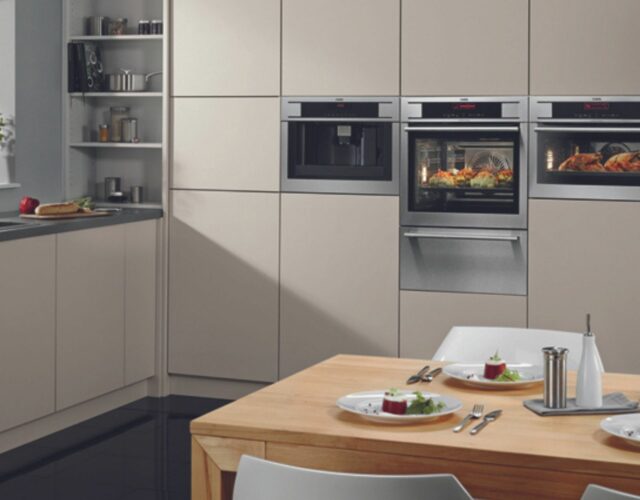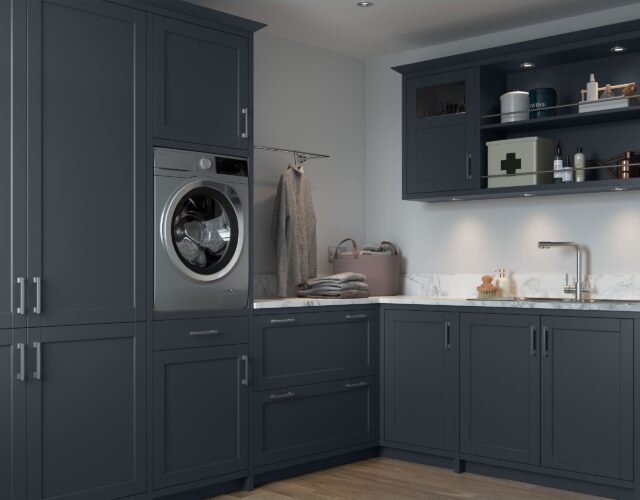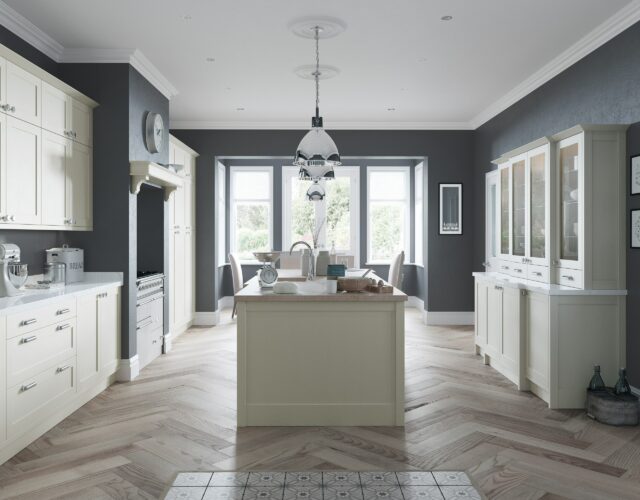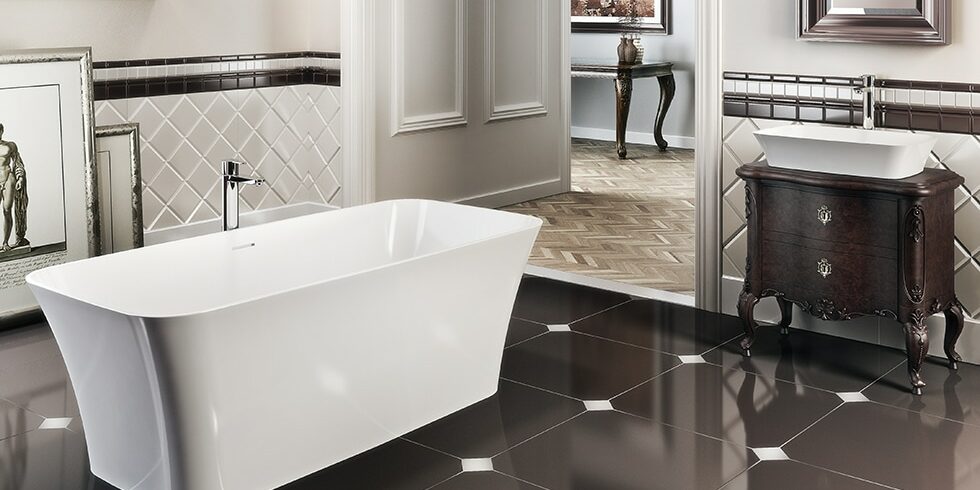

By Gayle
What To Expect During A Bathroom Installation
When it comes to renovating our homes, the process behind transforming a dreary space into a stylish new interior is often a bit of mystery, and nowhere is this more true than the bathroom. With most of the plumbing, pipework and electrics hidden behind walls and bath panels, you might be curious to find out just what’s going on behind the scenes, and not least, why you’re going to have to put up without your bathroom for a couple of weeks! While the bathroom fitting process can vary from retailer to retailer, our comprehensive blog should give you a good idea of what to expect from your bathroom, en suite, or cloakroom installation. We’ve broken the process down into three separate stages, during each of which a level of work will be carried out on your home.
The Bathroom Survey
A survey must be completed before your bathroom installation begins to make sure the details of your new design are compatible with your space. If your property is a new build or extension, your walls, floors and ceilings will need to be in place. The walls do not need to have been plastered provided you let your surveyor know how they will be finished. Sometimes removing your existing bathroom can reveal works that were unforeseeable during your survey.
The survey usually takes place once you have purchased your bathroom, 4-12 weeks prior to installation. The length of time between your survey and installation date depends on three factors:
- Availability of trades and fitters
- Product range (some made to order ranges, imported tiles, etc can be on long lead times)
- The progress in signing off your project with your designer (if any changes are needed)

Preparation & First Fix Plumbing & Electrics
This stage ultimately includes all the ‘behind the scene’ work that goes into installing your new bathroom, it might not look like much, but this is an important and time-consuming part of your project. You can expect this process to take around 5 working days depending on the scale and complexity of your design. You should remove all your personal belongings from the room before the work starts, and you may want to meet your installation team for the first couple of hours to communicate any details related to your home or the project.
Removing Your Existing Bathroom
Wallcoverings, floor coverings and sanitaryware will all be removed and disposed of unless otherwise agreed. Your bathroom retailer should arrange for the disposal of these items. Your water supply will need to be turned off for a couple of hours while the existing plumbing is capped off for the removal of your fixtures.
First Fix Plumbing & Electrics
All the plumbing supplies needed for your new design will be put in place, ready to be concealed when your room is replastered. Likewise, any required electrics and lighting feeds will be installed. The amount of electrical work can vary, in some cases, you may need a new fuse board to comply with building regulations.
Plastering
Usually removing wall coverings and laying pipework will result in your bathroom needing replastering. This can take 1-2 days to complete.
Flooring Prep
Depending on your subfloor type and choice of new flooring material, you may require preparation. Most floors require a latex or ply covering. Underfloor heating would be installed at this point.

The Installation
Finally, your bathroom will now begin to take shape. If you have opted for wall tiles these will be laid after the ceiling is painted and your shower tray or built-in tub are installed. Your cabinets and other sanitaryware are usually fitted afterwards. Unless you are awaiting any other bespoke works or solid installations, your fixtures will be connected ready for use. Flooring, lighting and towel rails or radiators will also be installed. The final stage of your bathroom installation can take around 5 days, again depending on the complexity of work required.
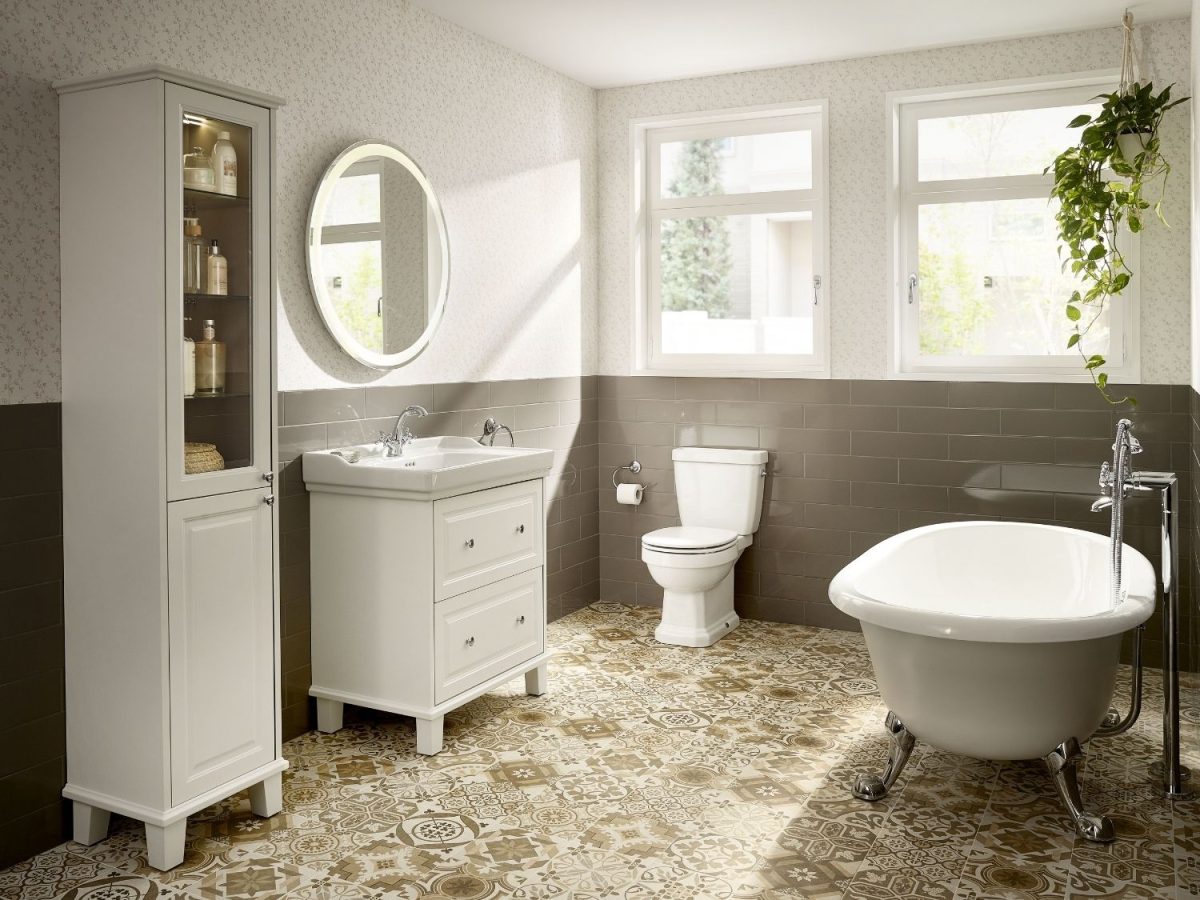
Other Features
Solid Material Installations
Some bathroom designs may include worksurfaces or wall coverings made from solid surface materials such as granite, quartz, or Corian. These require a template and fit process which will add additional time to your installation. If these surfaces are connected to your sink or shower enclosure, you will not be able to use these facilities until the surface is installed. Your fitter should be able to make the final connections the day after your surfaces are put in place. To get a solid surface material measured and fabricated by a specialist workshop can take 7-10 working days. Moulded Corian designs can take longer.
Bespoke Shower Screens
Bespoke shower screens are common in bathrooms with sloped ceilings. They can take 2-3 weeks to be manufactured and installed.
Decorating
You may opt to have your bathroom fully decorated and this will usually take place once the rest of your bathroom installation is complete.

On average, most standard bathrooms will take around 2 weeks to fully install and while the exact process might vary depending on the retailer you choose, this blog should give you a good outline of what you can expect. Other than removing your belongings and making alternative arrangements to access facilities, you shouldn’t need to do anything else to prepare for your bathroom installation. From the team at Ream Interiors, we hope you have a positive bathroom installation experience. If you have any questions or you’d like to know more, please don’t hesitate to get in touch, you can call our Gillingham showroom on 01634 799909 or email us at design@ream.co.uk


